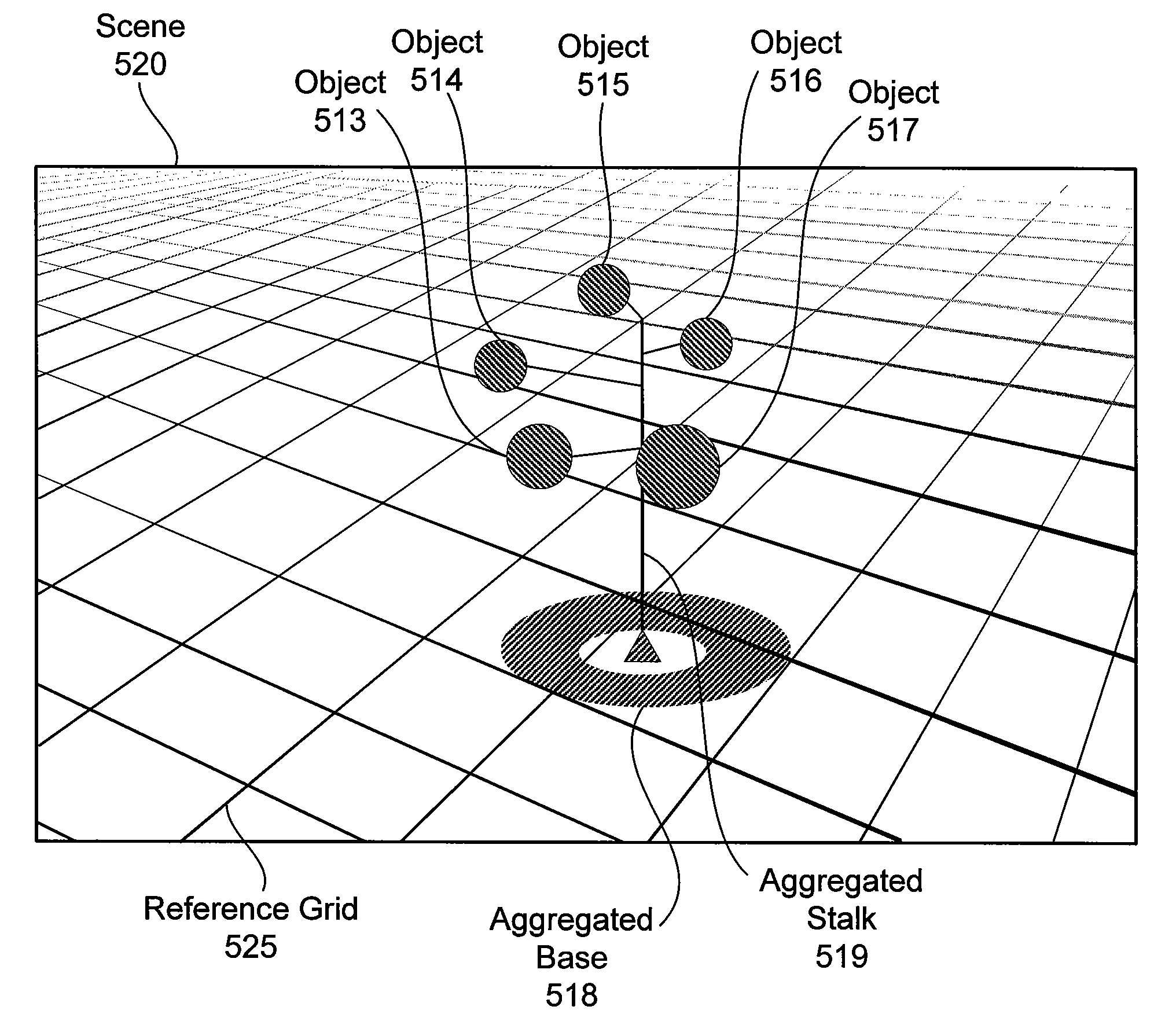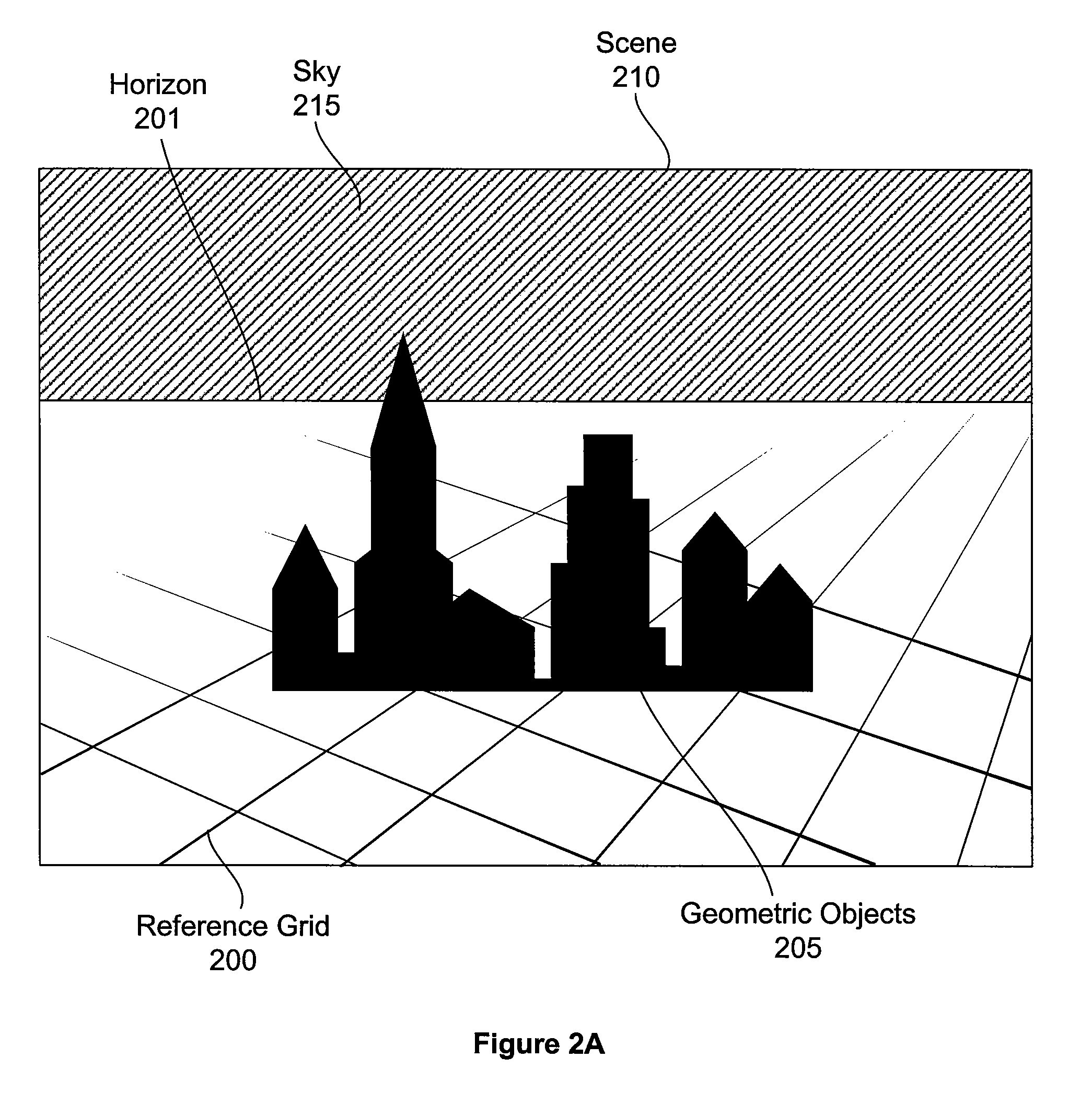Position pegs for a three-dimensional reference grid
a three-dimensional reference grid and position peg technology, applied in the field of three-dimensional (3d) authoring application interfaces, can solve the problems of difficult reference visualization, many of the perceptual cues we rely on to understand relative position and distance in the real world are not always easily conveyed in static two-dimensional projections of 3d space, and the technique is often not practical
- Summary
- Abstract
- Description
- Claims
- Application Information
AI Technical Summary
Benefits of technology
Problems solved by technology
Method used
Image
Examples
Embodiment Construction
[0031]In the following description, numerous specific details are set forth to provide a more thorough understanding of the present invention. However, it will be apparent to one of skill in the art that the present invention may be practiced without one or more of these specific details. In other instances, well-known features have not been described in order to avoid obscuring the present invention.
[0032]FIG. 1 illustrates a computer system 100 configured to implement one or more aspects of the present invention. The computer system 100 includes, without limitation, a central processing unit (CPU) 130, a system memory 110, a graphics processing unit (GPU) 134, a GPU memory 120, a memory bridge 105, a display device 136, a system disk 140, a device bridge 142, a network interface 144, a mouse 146, and input devices 146.
[0033]The CPU 130 communicates with the system memory 110 via the memory bridge 105, which may be, e.g., a Northbridge device or subsystem. System memory 110 is conf...
PUM
 Login to View More
Login to View More Abstract
Description
Claims
Application Information
 Login to View More
Login to View More - R&D
- Intellectual Property
- Life Sciences
- Materials
- Tech Scout
- Unparalleled Data Quality
- Higher Quality Content
- 60% Fewer Hallucinations
Browse by: Latest US Patents, China's latest patents, Technical Efficacy Thesaurus, Application Domain, Technology Topic, Popular Technical Reports.
© 2025 PatSnap. All rights reserved.Legal|Privacy policy|Modern Slavery Act Transparency Statement|Sitemap|About US| Contact US: help@patsnap.com



